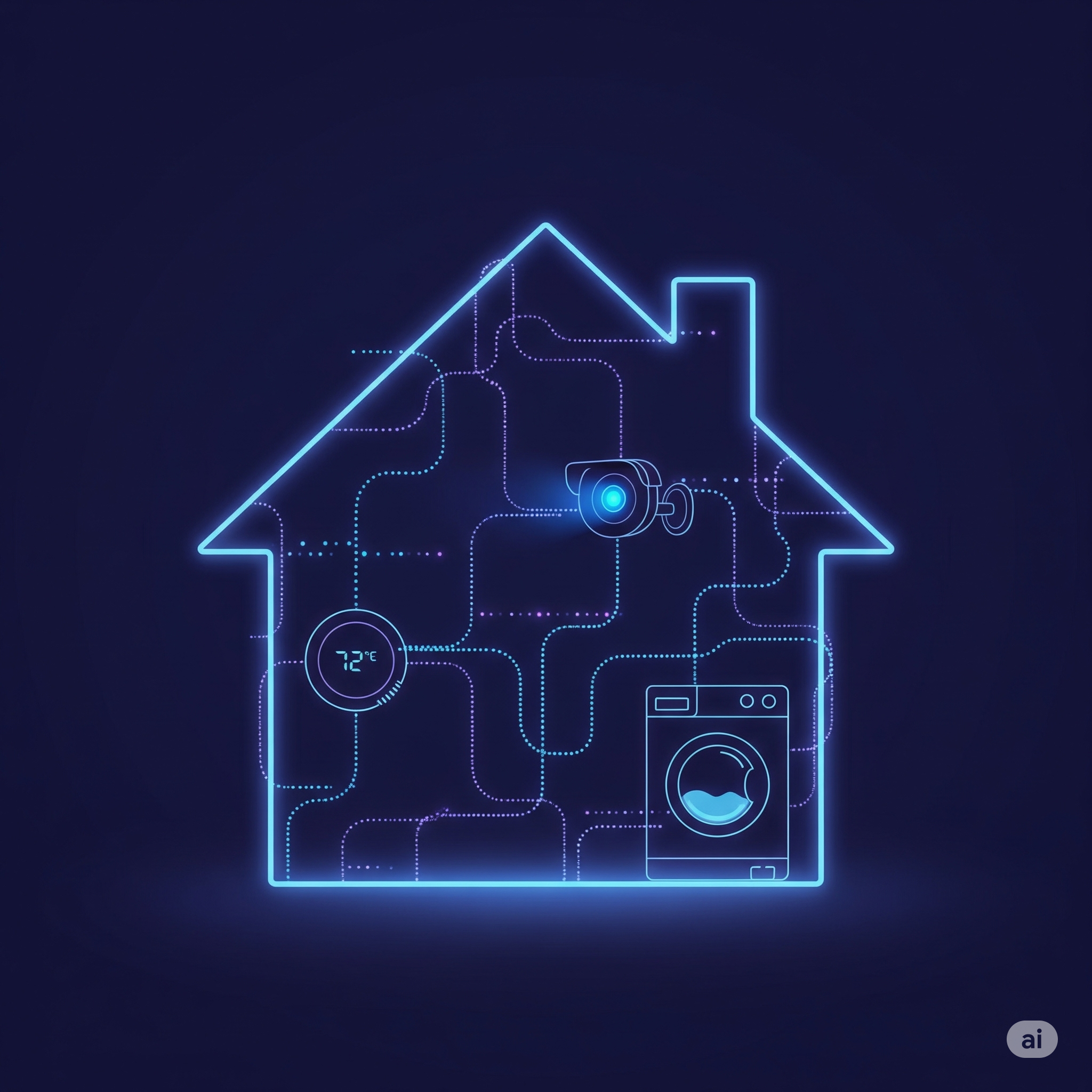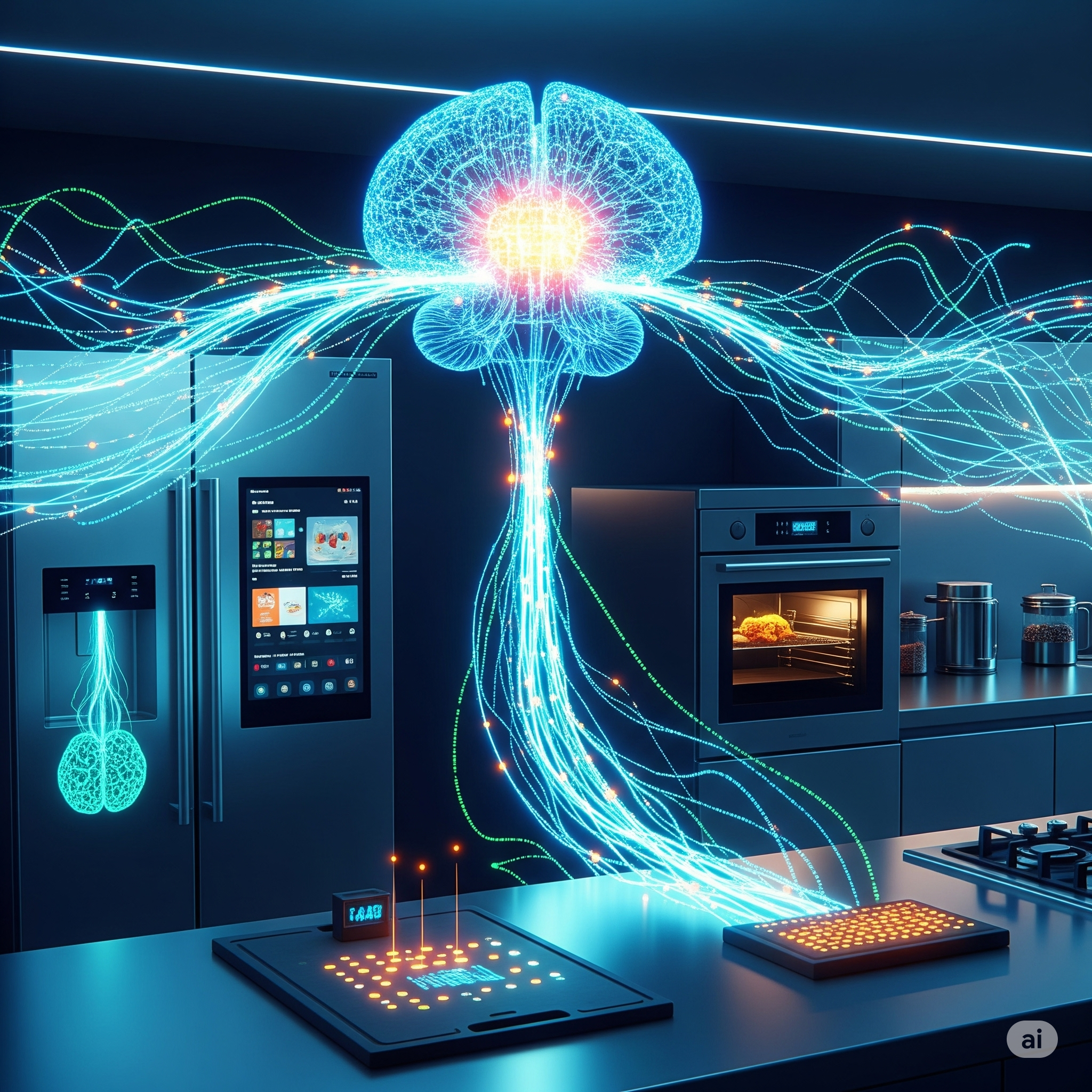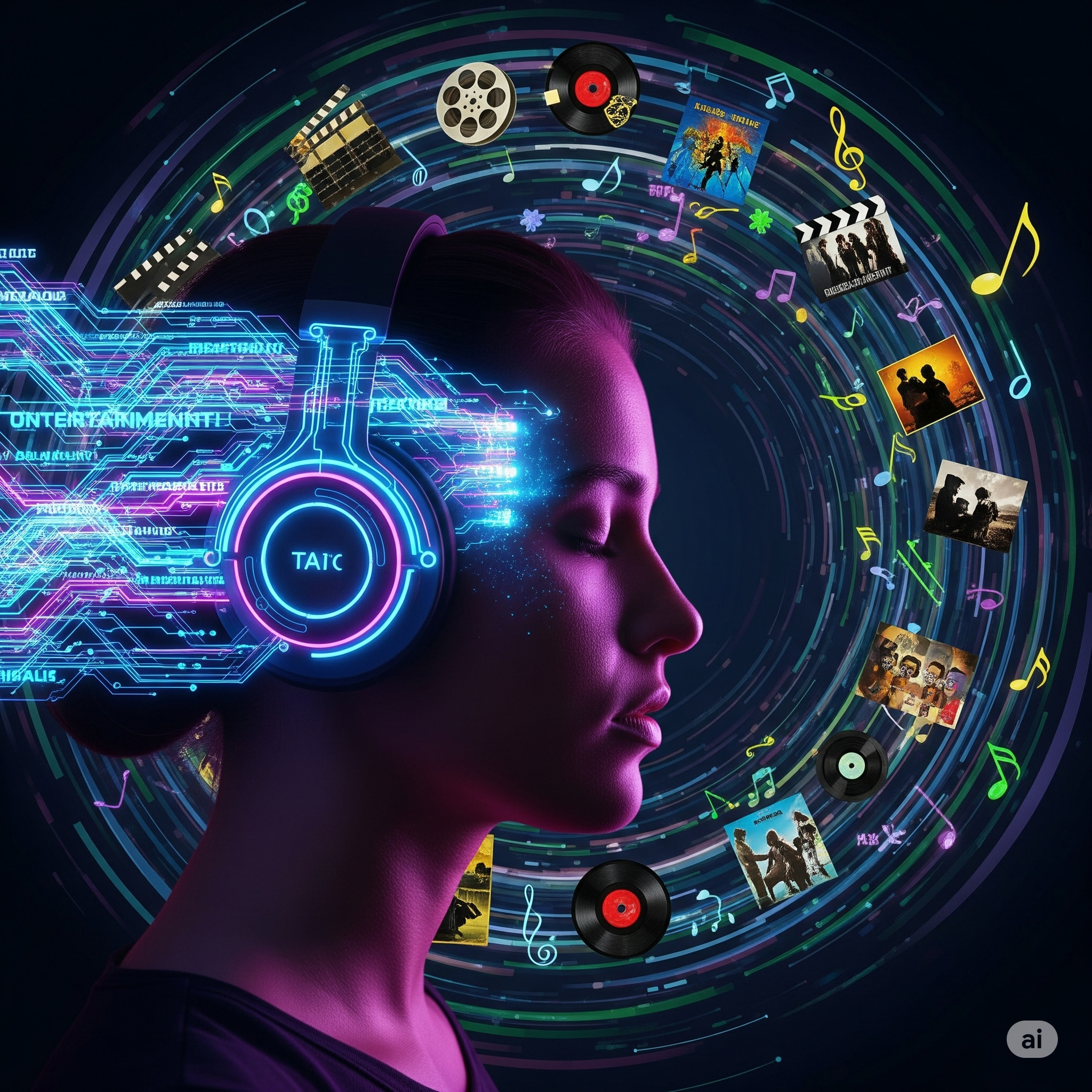Meta Description: Your home is smarter than you think. Explore the hidden artificial intelligence in smart thermostats, security cameras, and everyday appliances that’s making your life more efficient, secure, and comfortable.
Table of Contents
- Beyond the Voice Assistant: The Hidden AI
- AI in Home Security: Smarter Than a Watchdog
- AI-Powered Energy Management: The Unseen Savings
- Intelligent Appliances: The New Housekeepers
- The Future is Proactive: Smart Homes That Anticipate Your Needs
- FAQ Section
- Conclusion
Beyond the Voice Assistant: The Hidden AI
When most people think of AI in their homes, they picture a smart speaker like Alexa or Google Assistant. While these voice-activated devices are the most visible examples, they are just the tip of the iceberg. The real revolution in smart homes, what we’re calling “Smart Homes 2.0,” is the quiet, invisible artificial intelligence working tirelessly in the background. It’s in your thermostat, your security system, and even your refrigerator, constantly learning, adapting, and optimizing your daily life without you ever having to ask.
This isn’t the sci-fi dream of a home that makes you a cup of tea when you’re sick. It’s far more practical and impactful, focusing on things that matter: security, energy efficiency, and everyday convenience. This is the everyday AI you didn’t know you were already using, making your home smarter and your life easier.
AI in Home Security: Smarter Than a Watchdog
The traditional home security system relies on simple motion sensors and alarms. A pet, a tree branch, or even a sudden change in light could trigger a false alarm. AI-powered security, however, is a game-changer.
- Smarter Detection: Modern security cameras use computer vision, a form of AI, to differentiate between a pet and a person. This significantly reduces false alarms, ensuring you’re only notified when there’s a genuine threat.
- Predictive Analytics: AI algorithms can analyze historical data to learn your routines and identify unusual activity. For example, if a camera detects an unknown person lurking near your property at an odd hour, it can send an alert and even turn on exterior lights to deter them.
- Facial Recognition: Advanced systems can recognize the faces of family members and friends, allowing you to create “whitelists.” This means your system will ignore the mail carrier but immediately alert you to an unrecognised face.
Case in Point: A security camera with AI can distinguish a harmless delivery driver from a potential intruder, ensuring you don’t get unnecessary alerts while still maintaining a high level of security.
AI-Powered Energy Management: The Unseen Savings
Saving on electricity bills is a goal for every homeowner. AI has made this a hands-off process, offering efficiency that’s impossible to achieve manually.
- Smart Thermostats: Devices like the Nest Learning Thermostat use AI to learn your preferences and daily routines over time. It knows when you leave for work and when you’re typically home, automatically adjusting the temperature to save energy. It even considers external factors like weather forecasts to pre-heat or pre-cool your home.
- Real-time Optimization: AI-powered smart meters analyze your household’s energy consumption patterns, identifying which appliances use the most power and during what times. Based on this data, they can make suggestions or even automatically adjust settings to prevent peak usage.
- Integration with Renewables: As more homes use solar panels, AI systems can optimize energy usage by knowing when to store excess energy and when to use it, maximizing the benefits of renewable sources.
Statistic: A study by a leading industry firm found that homes with AI-powered energy management systems can have an energy consumption that is 10-30% lower than that of standard homes.
Intelligent Appliances: The New Housekeepers
AI isn’t just in your main home systems; it’s also making your everyday appliances much smarter.
- Robot Vacuums: The latest robot vacuums use computer vision and machine learning to map out your home, identify obstacles like furniture and even cords, and adjust their cleaning patterns for maximum efficiency. They can learn to avoid a pet’s food bowl or a child’s play area.
- Washing Machines & Dryers: AI-powered laundry machines can detect the weight of a load, the type of fabric, and the soil level to automatically adjust water usage, detergent quantity, and cycle time. This not only saves on utilities but also helps your clothes last longer.
- Smart Refrigerators: Some smart refrigerators use AI to track your inventory, suggest recipes based on what you have, and even alert you before an item is about to expire.
This subtle, behind-the-scenes intelligence is a testament to the quiet revolution happening in our homes, making daily chores more efficient and less of a burden.
The Future is Proactive: Smart Homes That Anticipate Your Needs
The future of smart homes isn’t just about reacting to commands; it’s about predicting your needs. AI will enable a new level of personalization and proactive automation.
Imagine a home that knows when you’ve woken up and automatically starts brewing your coffee, adjusts the lighting to your preferred level, and turns on the news. Or a home that detects a potential pipe leak and sends you an alert before a full-blown flood. These predictive capabilities, driven by advanced machine learning, will make our homes more intuitive and responsive than ever before.
This level of seamless, proactive automation will create an unparalleled level of comfort, security, and convenience, making the AI you didn’t know you were using even more essential.
FAQ Section
Q1: How does an AI-powered smart thermostat learn my habits? A: It uses a machine learning algorithm to analyze your daily schedule, when you adjust the temperature, and how long you are typically home or away. It then builds a custom schedule that’s optimized for both your comfort and energy savings.
Q2: Are AI smart home devices a security risk? A: All internet-connected devices carry some risk. However, reputable manufacturers prioritize security. It’s crucial to use strong passwords, enable two-factor authentication, and keep your device software updated to minimize risks.
Q3: Can AI-powered security cameras distinguish between a human and a pet? A: Yes. Modern AI-powered cameras use computer vision to analyze the shape, size, and movement patterns of objects, allowing them to accurately differentiate between a person, a pet, a car, or a tree branch.
Q4: Is AI in home appliances just a gimmick? A: Not at all. While some features may be a novelty, AI in appliances provides genuine benefits like energy savings, better performance, and predictive maintenance that can save you money and hassle in the long run.
Q5: What is predictive maintenance in smart homes? A: Predictive maintenance uses AI to analyze a device’s performance data and predict when a component is likely to fail. It can then send an alert to the homeowner or even a service provider, allowing for a repair before a major breakdown occurs.
Q6: How can I be sure my smart home devices are not recording me? A: Many smart devices have physical mute buttons for microphones. Always read the manufacturer’s privacy policy to understand what data is being collected and how it’s being used.
Q7: Will AI-powered smart homes become mainstream in developing countries? A: Yes. As the cost of smart devices decreases and internet access becomes more widespread, the smart home market is expected to grow significantly in developing regions, with a focus on core benefits like energy efficiency and security.
Q8: What’s the main difference between a traditional smart home and Smart Home 2.0? A: Traditional smart homes are reactive and rule-based (e.g., “if motion, then turn on light”). Smart Home 2.0 uses AI to be proactive and predictive, learning your habits and anticipating your needs without explicit commands.
Conclusion
The AI revolution in our homes is not just about a talking speaker; it’s a quiet, profound shift toward truly intelligent living spaces. From the unseen algorithms that trim your energy bills to the computer vision that protects your property and the predictive analytics that anticipate your needs, AI is making our homes smarter, safer, and more efficient than ever. As these technologies continue to evolve, our homes will not just be places where we live, but proactive partners in our daily lives.
SEO & Technical Suggestions
- Primary Keyword: Everyday AI
- Secondary Keywords: Smart homes 2.0, AI in smart homes, AI-powered home, smart home automation, AI security cameras, predictive maintenance, intelligent appliances, smart thermostat.
- Schema Markup Suggestions: Use
ArticleorBlogPostingschema. Consider usingFAQPageschema for the FAQ section. - Internal Link Suggestions: Link to previous articles on AI trends, the future of AI, or articles about home technology.
- External Link Suggestions: Link to reputable sources like CNET, tech review sites, and market research reports on smart home trends.
- Featured Image Suggestion: An artistic, abstract image showing a stylized house outline. Within the outline, subtle, interconnected glowing nodes and data streams flow between different household items like a thermostat, a security camera, and a washing machine, symbolizing the invisible AI connecting and powering them. The color palette should be calming yet futuristic, using soft blues, purples, and gentle glows.





